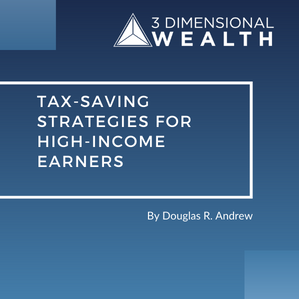Indexed Universal Life insurance can be a financial powerhouse for your future–but it’s not foolproof. What are its downsides, and how can you avoid them?
There are ways both policyholders and financial professionals who aren’t adept at properly structured, maximum-premium Indexed Universal Life policies (what I call LASER Funds) can go astray. Let’s map the potential pitfalls so you can take the better route to financial success.
Now, there are a lot of financial professionals out there who don’t understand how to properly structure and fund an IUL policy to give you optimal liquidity, safety, predictable rates of return, and tax advantages. There are many in fact who might say, “I’ve never seen an insurance policy do that.”
Or others might say, “Well, this sounds too good to be true. You say this IUL policy accumulates your money tax-free? You can access your money tax-free, and when you die, it transfers income-tax-free to your heirs? Plus it can historically earn an average of 5% to 10% predictable rates of return–with a 0% guaranteed floor during the market’s down years?” To that I say, “Yep.”
They might reply, “Well, I’ve never seen that.” But to that I counter, “Just because you haven’t seen something doesn’t mean it doesn’t exist. Have you seen gravity? Your brain? Does that mean they don’t exist?”
Then they say, “Well, there at least have to be downsides, right?” And that’s where we dive into this discussion, because yes there can be, if you don’t navigate things well.
NOT PROPERLY STRUCTURED
If not structured properly, your policy could be earning something like 11%, but you’re only netting a paltry 4% or 5%. However, if structured correctly, that same policy could be earning 11% and netting as much as 10%, probably within 10 years. Why the difference?
Because your policy was structured to give you more life insurance than you needed under the tax citations TEFRA and DEFRA, which means the cost of insurance is higher than it needs to be. Most advisors simply take the wrong approach by focusing only on the death benefit.
Don’t let that happen.
NOT PROPERLY FUNDED
Let’s say you have $500,000 you want to set aside in a LASER Fund. To be in compliance with the tax citation TAMRA, your IUL specialist would direct you to fund that policy with maximum premiums over five years ($100,000 a year) for a total of $500,000 (which is called your Guideline Single Premium).
You also want your IUL specialist to squeeze down the death benefit as tight as you can get it. The older you are, the less insurance that’s required. For a 60-year-old, that’s only about $1,250,000. (The $500,000 you put into the policy ends up becoming part of the $1,250,000 death benefit, if it’s structured correctly.)
But what if things come up in life? Let’s say you have a setback and can’t put in part of that $500,000 you had earmarked for the policy?
The good news is IULs are flexible, and you can make adjustments with the help of your IUL specialist. But if you don’t make adjustments, your policy likely won’t perform as originally illustrated.
It’s kind of like this analogy: Imagine you were to take off from your city’s international airport with the goal to travel around planet Earth (26,000 miles) and arrive back where you started. However, you go one degree off course toward the beginning of your flight and never correct your trajectory. You would end up thousands of miles from where you took off.
Folks, you don’t want to do that with your IUL policy. You want to have annual reviews and adjust as needed. You can lower the death benefit. You can make up for the money you didn’t put in, but you have to fund it properly in order for it to perform as illustrated.
WRONG COMPANY
There are several hundred life insurance companies that offer IUL policies. Frankly, I would only put my money in maybe a half a dozen.
I’m very, very picky. I want to put my money in companies that don’t keep all the money in their coffers while touting that they’re big and strong, meanwhile they’re stingy with the rates of return. I want to put my money in companies that offer IUL and know how to structure it properly to benefit me, the policyholder, not to benefit them, the insurance company.
You also want to choose the companies with high ratings. There are all kinds of rating agencies like Fitch, Moody’s Investment Services, Standard & Poor’s, and Weiss. I like to put my money in companies that are rated 90 or higher, meaning 90% of insurance companies are not rated as high as the ones I like to put my money into.
WRONG PRODUCT
You also want to choose the right product with the right company. To explain, an insurance company may have several universal life products, structured differently based on objectives. Let’s say your objective is like mine: to have the least amount of insurance that you can get away with under the IRS rules and put in the most money as quickly as allowed.
Then you want to use the product that’s going to be designed for tax-advantaged accumulation and tax- free income.
If you’re going to start taking that tax-free income in five years or so, you also want to avoid a product designed to give you the best benefits after Years 10, 15 or 20 .
A lot of financial professionals don’t understand all this. They just choose the product where they’re going to make the most compensation. That’s pretty sad. You want to choose the right product.
WRONG FINANCIAL PROFESSIONAL
Now, there have been many times people have come to me and they said, “I chose the companies that I found out you put your money into, Doug. I even chose the right product, but it’s still not performing.”
You know why? It’s the most important reason why IUL doesn’t perform the way it could: the financial professional was not proficient. Or they didn’t stick around. Or they didn’t conduct annual reviews to make adjustments as needed. Or they simply didn’t know what they were doing.
Don’t go down that road.
If you realize your financial professional isn’t proficient enough to make sure that you are optimizing your policy, it’s possible to do a 1035 Exchange and move to a different company with a different product, totally tax-free. It may behoove you to do that, but this is why working with an experienced IUL specialist from the outset is so very important.
I love pointing people to the experts, people I know are proficient. They have to pass a proficiency exam. It’s 130 questions. Do you know that most insurance agents in America wouldn’t even score 30% on that exam?
If you want to learn more, I’ll show you how to explore these concepts on your own and probably wind up knowing more about creating a properly structured, maximum-premium IUL than most insurance agents.
Education can give you an advantage, helping you know how to align yourself with IUL specialists who can deliver what you’re looking for. And it’s easy–it’s all in one of my latest books.
WANT TO LEARN MORE?
Watch the Video – Watch the related YouTube video to see me explain “What Is the Downside of IUL?” (and while you’re there, be sure to subscribe to my YouTube channel so you don’t miss a thing!).
Elevate Your Financial Dimension – Find out how you can improve your Financial Dimension journey and seize the liquidity, safety, predictable rates of return, and tax advantages of a LASER Fund. Explore the in-depth financial strategies and learn from real-life client experiences by claiming your free copy of “The LASER Fund” book at LASERFund.com. Just pay for shipping and handling, and we will send it to you, absolutely free.
Join a Webinar – Want to find out if a LASER Fund (a maximum-funded, properly structured indexed universal life insurance policy) is right for you? Join us for an upcoming webinar where you can explore these strategies.



